



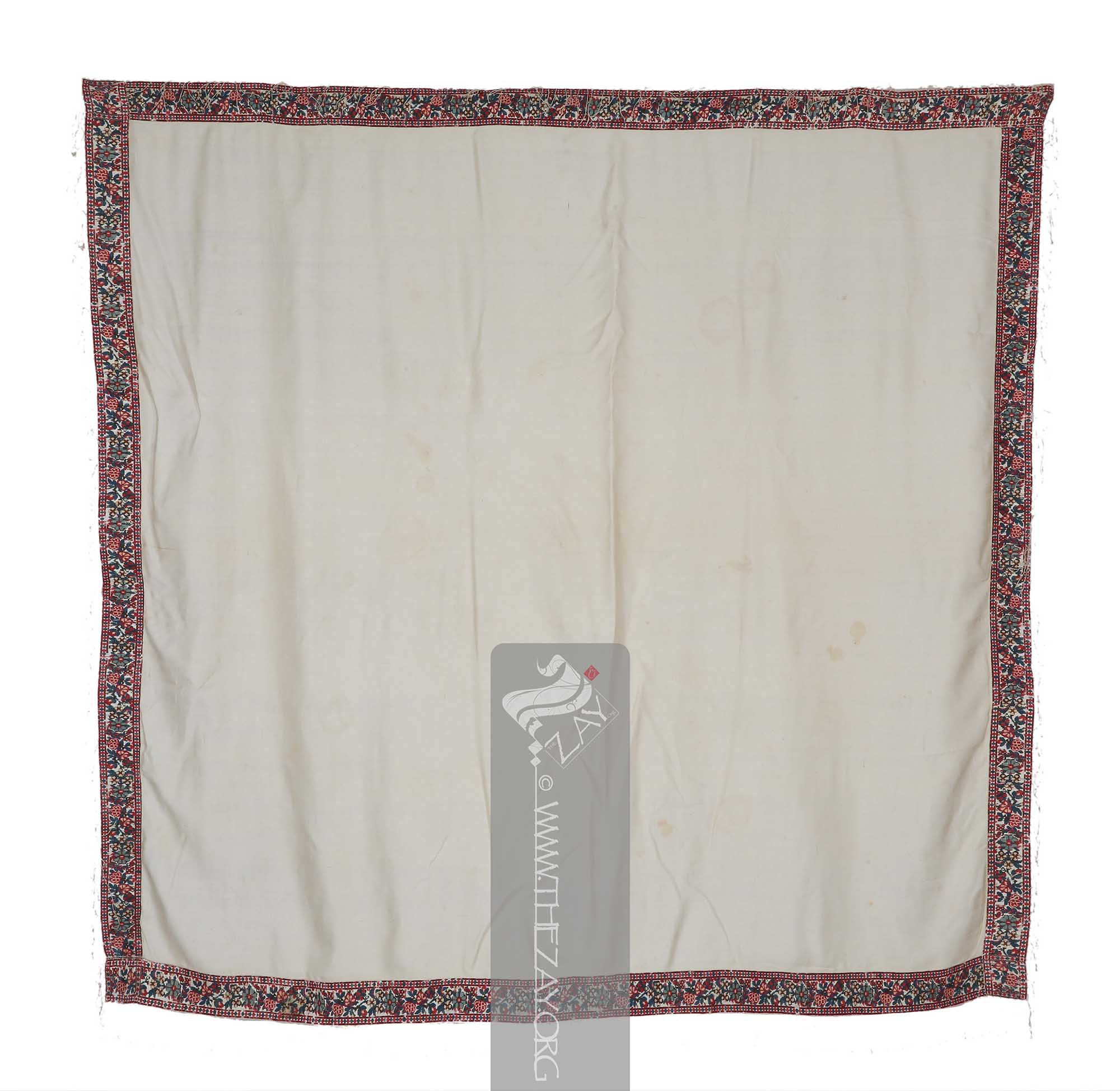
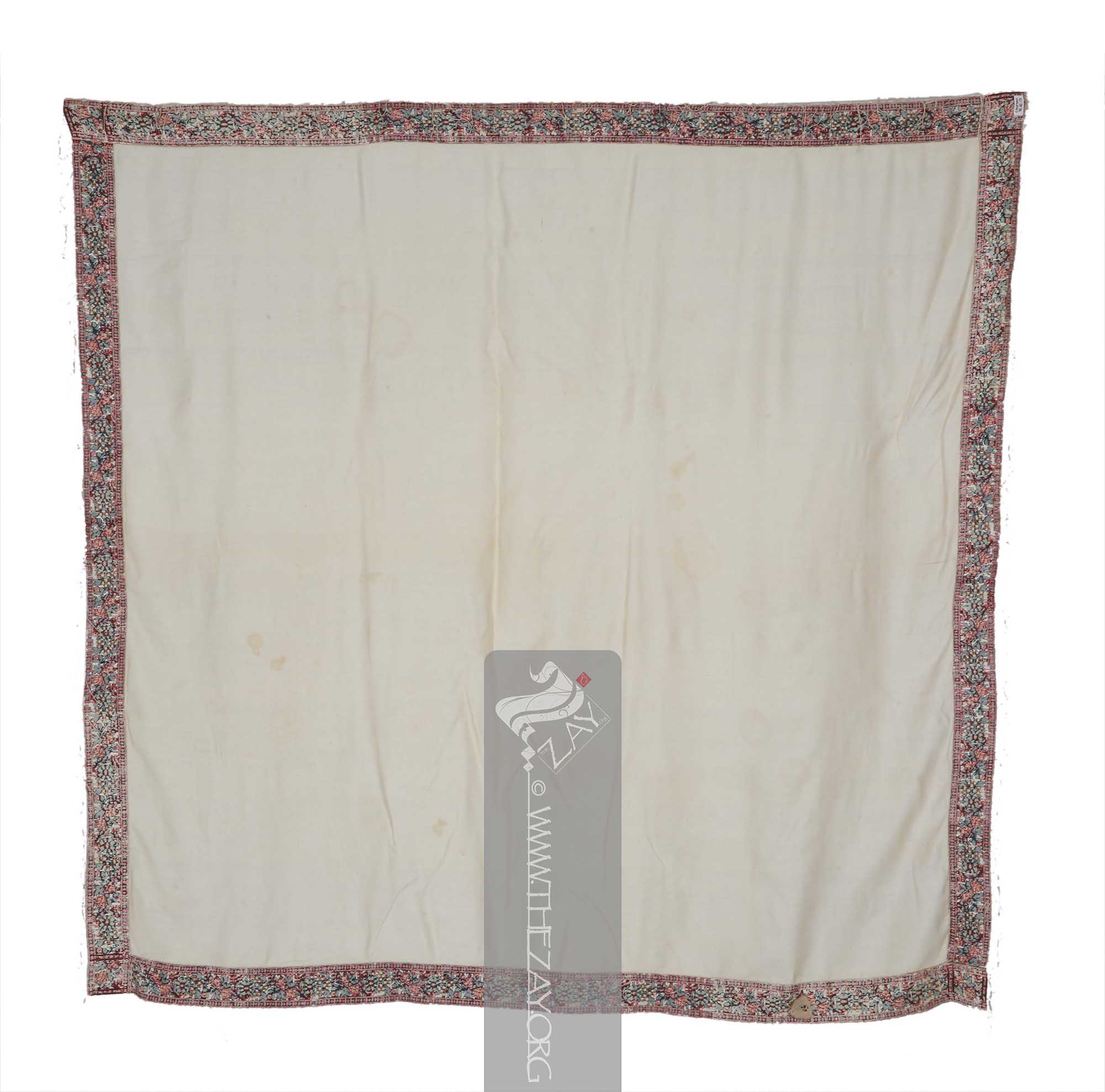
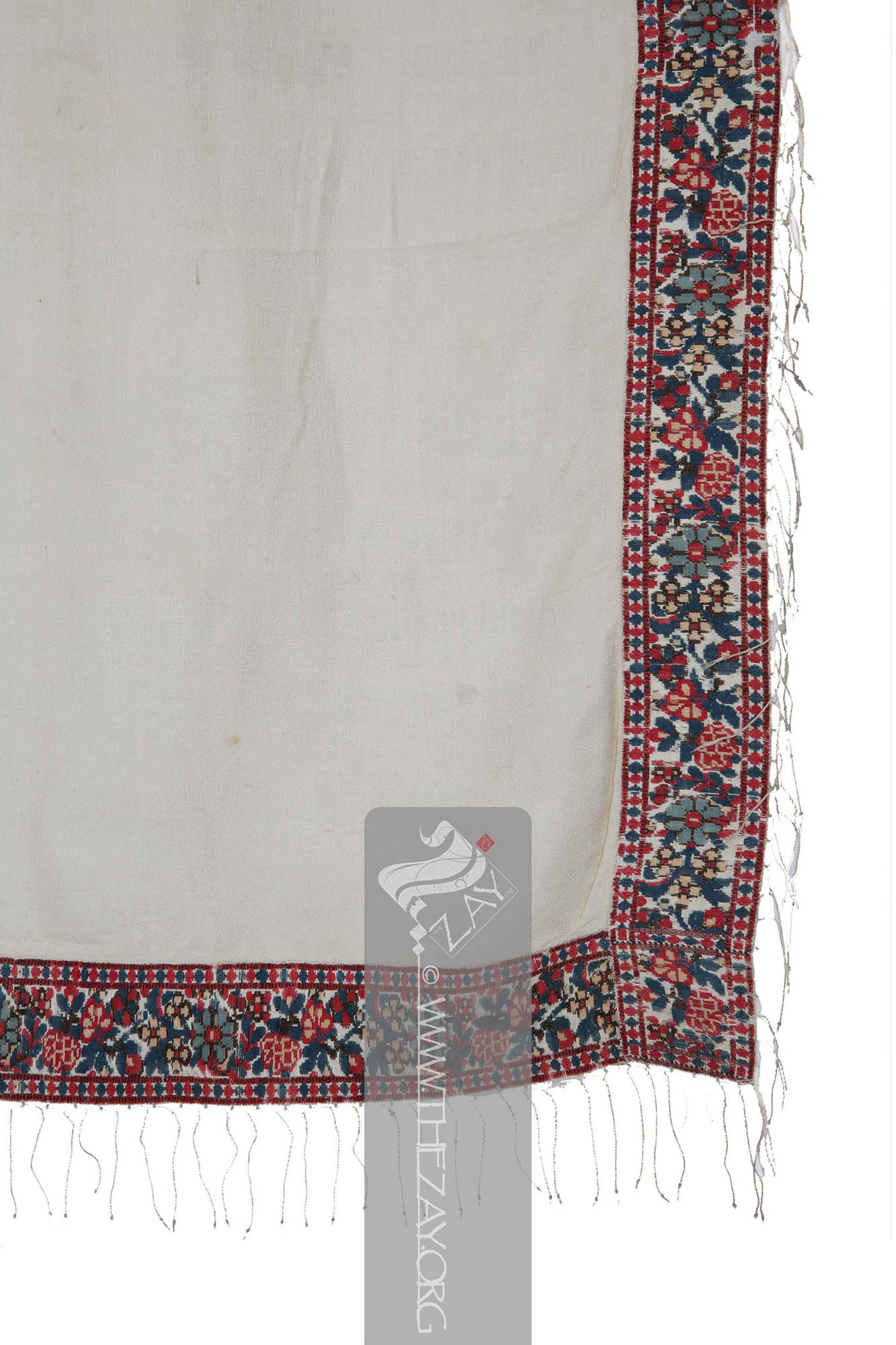

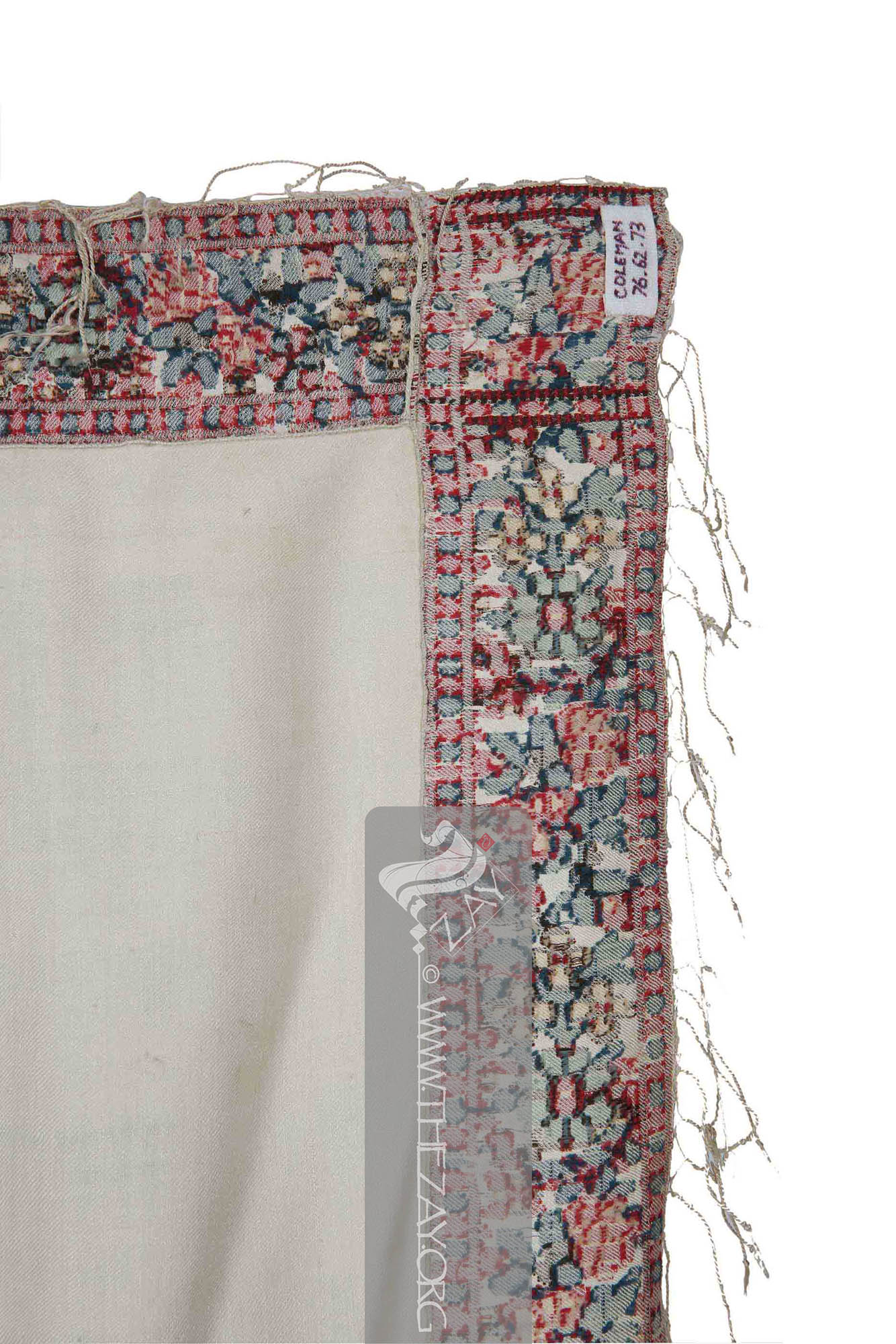
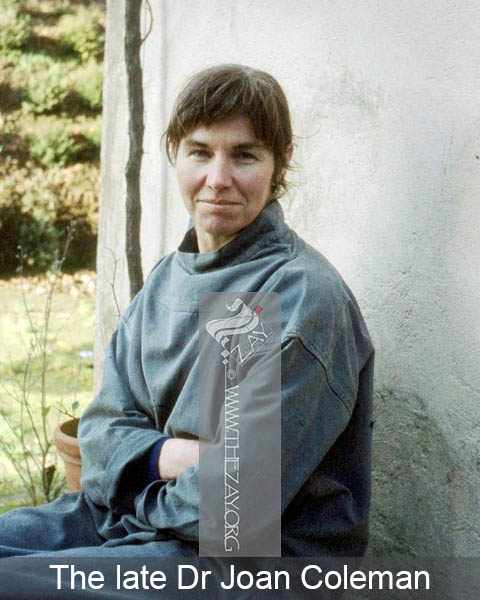
| Local Name | Shawl, paisley_shawl, Norwich_shawl |
| Object Category | Overgarment Cloak |
| Gender | Female |
| Place Of orgin | Europe |
| Region | Norwich |
| Object Range | England, Scotland, Wales, Ireland, France, America |
| Dimensions | Length: 140 cm Width: 140 cm |
| Materials | Silk Wool |
| Technique | Machine Stitched Woven |
| Motif | Floral |
| Provenance | Purchased, Dr Joan Coleman Collection, Kerry Taylor Auctions, London 2021 |
| Location | The Zay Zay: (Arabic: costume, Pl. azyaā’), a set of clothes in a style typical of a particular country or historical period. Initiative |
| Status | In Storage |
| ZI number | ZI2021.500952.3 EUROPE |
Quadrille: (Latin: quadrum – square) Quadrille fabric is a type of lightweight cotton or linen fabric, woven with a checked or plaid pattern in contrasting colours. It is commonly used for clothing, drapery, and upholstery.
) threads in ivory hanging loose in a series of fringes. There are quite a few signs of wear and tear especially on and around the borders bearing testament to its age and use.